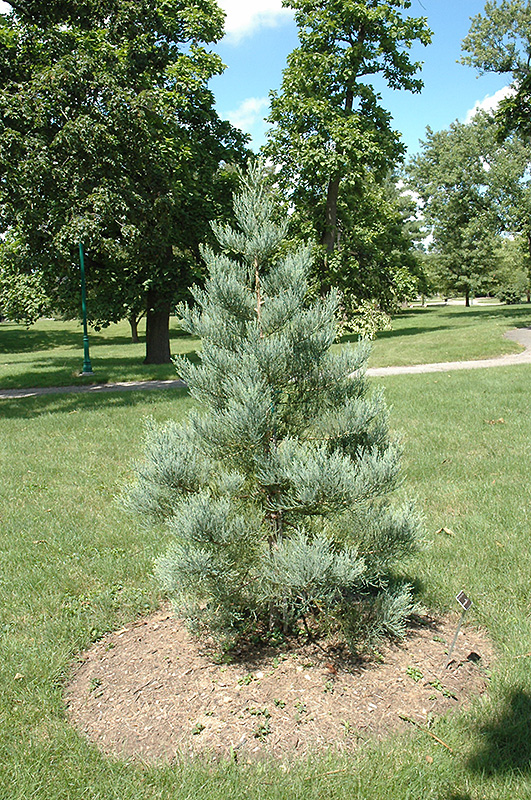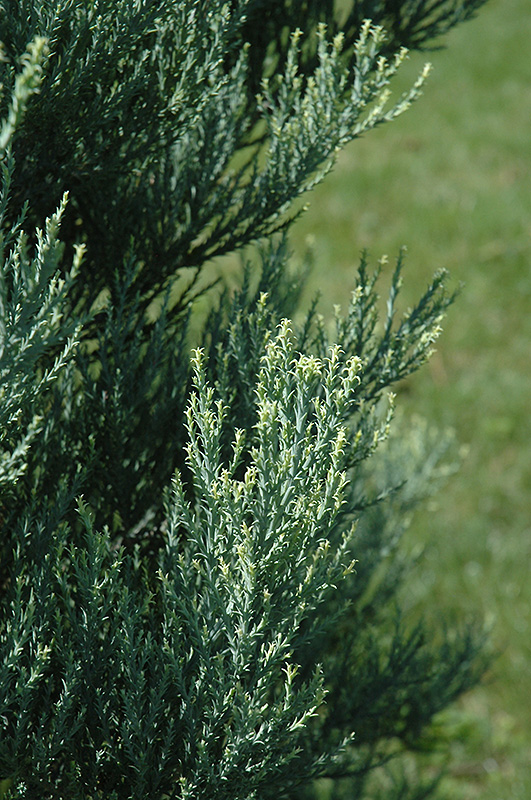Sequoia, (Giant) Hazel Smith Sequoiadendron giganteum 'Hazel Smith' Height: 60 feet Spread: 35 feet
Sunlight:
Hardiness Zone: 5b Other Names: Bigtree, Sierra Redwood Description: This majestic variety is pyramidal in form with upswept branches covered in blue-green foliage; lovely red-brown, spongy bark and aromatic foliage make this a beautiful accent tree for the right space Ornamental Features Sequoia, (Giant) Hazel Smith is primarily valued in the landscape for its distinctively pyramidal habit of growth. It has bluish-green evergreen foliage. The fragrant scale-like sprays of foliage remain bluish-green throughout the winter. The furrowed brown bark adds an interesting dimension to the landscape. Landscape Attributes Sequoia, (Giant) Hazel Smith is an evergreen tree with a strong central leader and a distinctive and refined pyramidal form. Its relatively fine texture sets it apart from other landscape plants with less refined foliage. This is a relatively low maintenance tree, and may require the occasional pruning to look its best. It has no significant negative characteristics. Sequoia, (Giant) Hazel Smith is recommended for the following landscape applications; Planting & Growing Sequoia, (Giant) Hazel Smith will grow to be about 60 feet tall at maturity, with a spread of 35 feet. It has a high canopy of foliage that sits well above the ground, and should not be planted underneath power lines. As it matures, the lower branches of this tree can be strategically removed to create a high enough canopy to support unobstructed human traffic underneath. It grows at a slow rate, and under ideal conditions can be expected to live to a ripe old age of 200 years or more; think of this as a heritage tree for future generations! This tree should only be grown in full sunlight. It does best in average to evenly moist conditions, but will not tolerate standing water. It is not particular as to soil type, but has a definite preference for acidic soils. It is somewhat tolerant of urban pollution. This is a selection of a native North American species. Special Attributes The sequoia less than 70 years old sometimes produce a few cones, but large cone production normally doesn't happen until the tree is several hundred years old![]()
![]()
![]()
![]()
![]()
![]()
![]()
![]()
![]()
![]()
![]()
![]()


